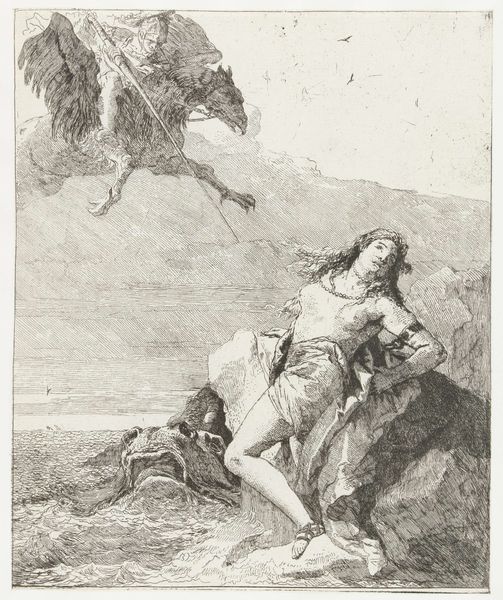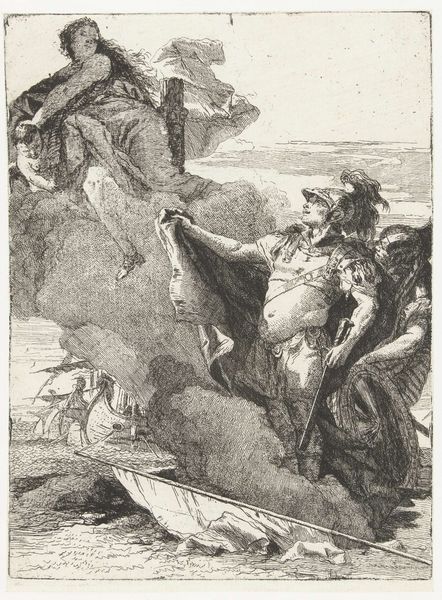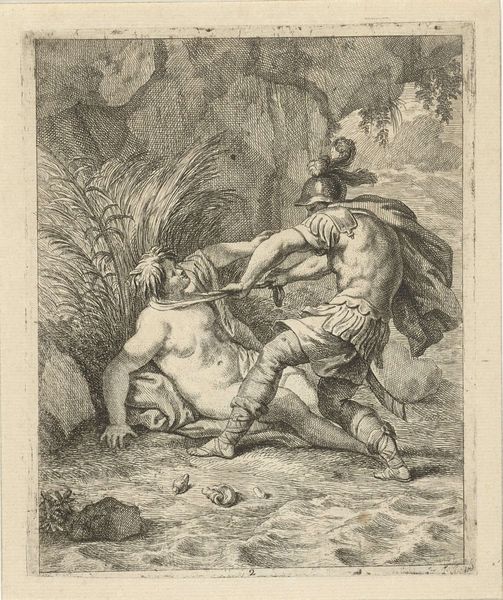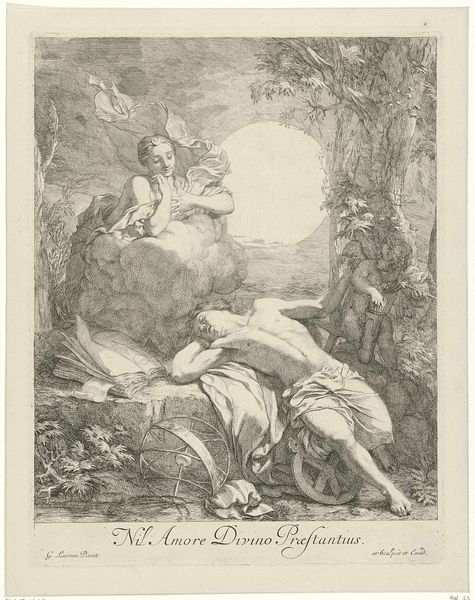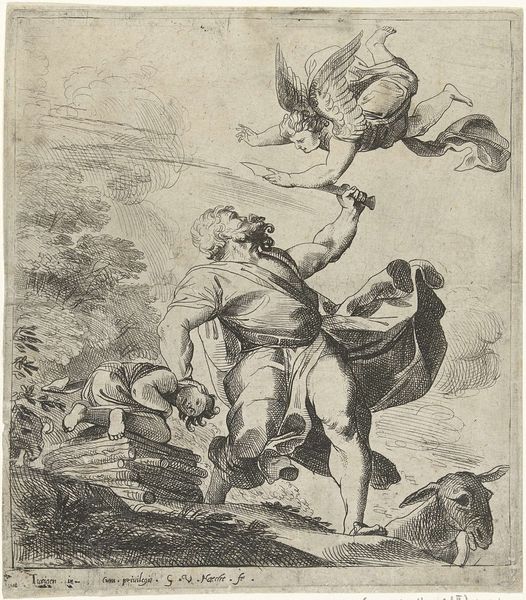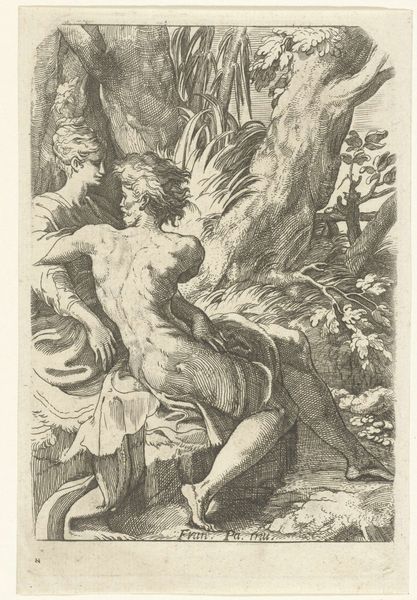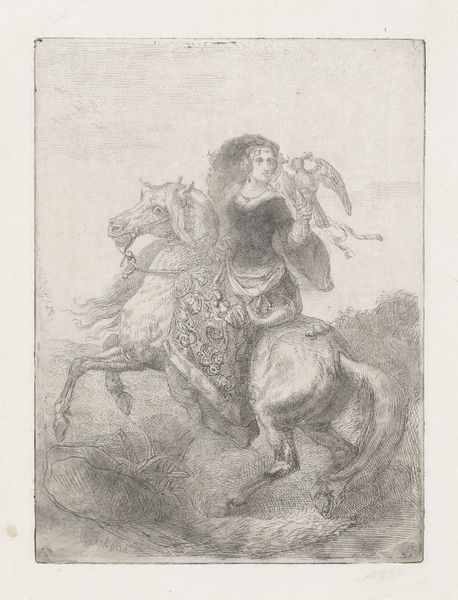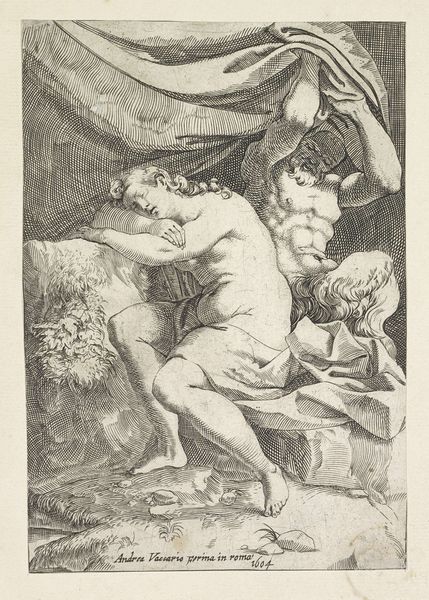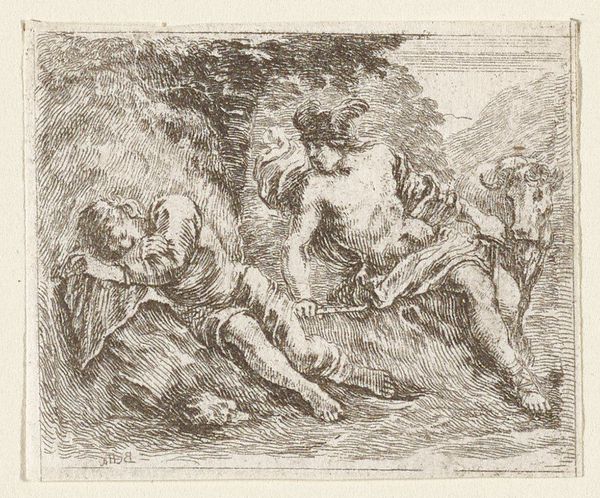
Angelica Bound and about to be Devoured by the Sea Monster after 1757
0:00
0:00
drawing, print, etching, paper
#
drawing
#
allegory
#
baroque
# print
#
etching
#
landscape
#
figuration
#
paper
#
form
#
line
#
history-painting
#
italian-renaissance
#
nude
#
italy
Dimensions: 244 × 204 mm (plate); 245 × 207 mm (sheet)
Copyright: Public Domain
Curator: Giovanni Domenico Tiepolo's "Angelica Bound and about to be Devoured by the Sea Monster," made after 1757, presents a dramatic scene rendered through etching on paper. Editor: There’s a raw, unsettling energy about it. The jagged lines of the rocks and the monster's form—it feels almost feverish, like a nightmare captured on paper. The process mirrors the anxiety of the scene. Curator: Indeed. Tiepolo draws upon the visual vocabulary of the Italian Renaissance while pushing it into a distinctly Baroque drama. This etching engages with a tradition of history painting, but consider its distribution through printmaking; how did that shape the accessibility and therefore, the political interpretations of the imagery? Editor: Well, etching itself allows for multiples, democratizing the image, sure, but it also highlights a more direct link between the artist's hand and the final product. Look at the varying pressure, the cross-hatching – it emphasizes the labor, the materiality. Was it commissioned, reproduced, distributed? That impacts everything. Curator: The subject matter, drawn from mythology, would resonate with the educated public. These prints allowed for the widespread dissemination of stories, often reinforcing or challenging existing social mores regarding female virtue and sacrifice. Consider how the “originality” of a Tiepolo was itself being negotiated by a broader, print-consuming audience. Editor: Exactly. And that paper itself has a history – who made it, where, under what conditions? Each impression then has its own unique quality, like variations on a theme wrought by a master craftsman. Curator: Seeing it this way, the image becomes not just an isolated aesthetic object but also a focal point within a wider network of social practices and power dynamics, accessible by a broader segment of society. Editor: I hadn’t considered the socio-political dimensions of paper itself—always caught up in the image, the composition. Thank you for broadening my view. Curator: Likewise, the nuances you’ve highlighted regarding the labor involved adds layers to its significance.
Comments
No comments
Be the first to comment and join the conversation on the ultimate creative platform.
